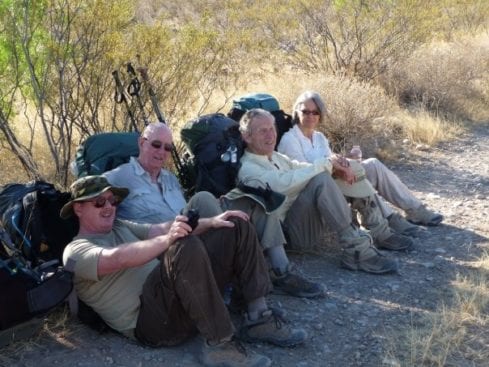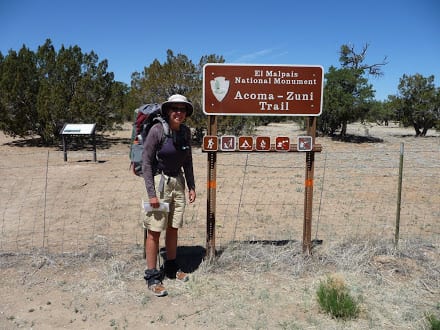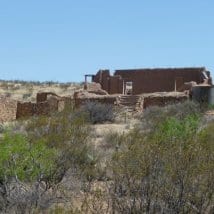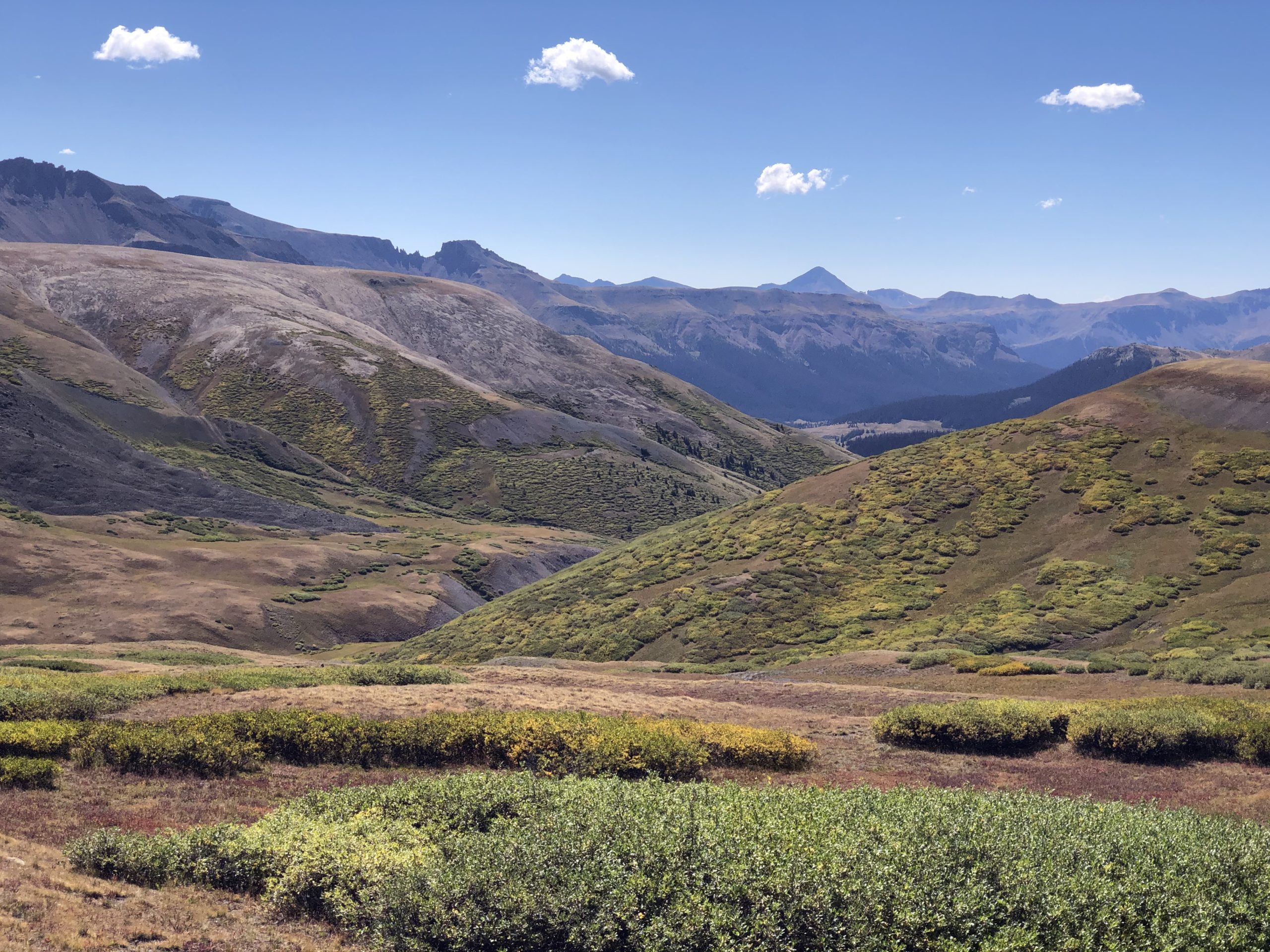CDT – April 24th, 2009
The next two days were heat, desert, and a constant race for water. I was hiking around a group of four other hikers, three men and a woman, who had been on Sam’s shuttle out to the trailhead when we started the hike. I had communicated with two of them before starting the hike.
Going into this hike, I had the advantage of finishing the Pacific Crest Trail about seven months earlier and staying in reasonably good shape through the winter. Except for Mr. K, the others did not do any training before the hike and chose to let the trail beat them into “trail condition.” After the first day of “newness” had worn off, the brutality of the desert in April had begun to set in for the group.
I watched the others struggle with the heat, frequently stopping for shade at every bush they could find. The first two nights ended in a water race, with the group practically collapsing from heat exhaustion upon arrival at camp for the night.
The first night had ended with two hikers yelling at me to give them my water as they arrived while I tried to calmly lead them to the cache where gallon jugs were stored. Delirious from thirst and heat, they had staggered past the big steel box with water jugs.

By the morning of the 24th, everyone was exhausted and completely overwhelmed by the lack of a clear trail. Walking through eroded ravines with faint tread and unmaintained forest or desert service roads was a far cry from the Appalachian Trail and PCT.
I woke up early on the morning of the 24th and climbed up the hillside, scouting the trail ahead. There was no trail, and I knew the others would not be happy. I saw clear CDT markers scattered amongst the brush in the distance, but they disappeared into thick, skin-tearing cacti and prickly plants.
I found off-trail hiking fun, but I was in the minority. I pushed back through the bushes, returning to give the others the lay of the land. Everyone was up, in the middle of packing, and as I described the upcoming “adventure,” or lack of a trail, they stared at me as if a little shell-shocked.
I finished packing and turned to ask the others if they were ready to go. Ron had checked his map and found a dirt road that crossed the CDT in the general direction we were hiking. It added a mile or two, but it was easier hiking. I had suggested the trail but had been vetoed and watched as everyone headed off after Ron.
This trail was considered flexible. There were three maps for the same “trail.” Several of the maps had “alternate” routes. This road happened to be one of those alternates. I think it may have been one of the “Jonathan Ley” alternates.
I watched as they walked away, looked back up the hill, and then down at the whip slashes across my cut-up legs. I leaned down, retied both bandanas to the back of my legs to protect my sunburnt calves, and then headed off after the others. I really should have worn pants.
A few minutes later, I walked up to find the others stretched out in the shade of a scraggly bush, leaning over the side of the dirt road and providing a little shade. It was the first shade they had arrived at on the dry, barren road, and they were taking advantage of it.
I chatted with them briefly about the next town (Lordsburg, NM) and continued hiking down the road. It was too soon to stop, and blisters hurt TWICE as much when you stopped. A few miles later, I reached the trail intersection and waited on the others before heading cross-country towards 81 and a known water cache.
Arriving on the road later in the afternoon, we had to search for the cached water. The plastic jugs had been tied up in black trash bags and hidden so border crossers would not find them. There was a large metal box for the water, but we had been told this one was not being used.
There was no shade, so I set up my tarp, and JB sat under it with me; both of us were beginning to doze off when I suddenly heard an engine and looked up to see Ron waving from the window of a Border Patrol truck. He’d had enough of the heat and the desert and was heading into town – away in a swirl of dust! As he drove away, images of bowls of ice cream and ice-cold sodas immediately popped into my mind.
The next water source was 20 miles, and my pack was heavy. I needed water for the desert hike and dinner that night. The walk was cross country, and I kept my eyes fixed on the ground, weaving in and out of prickly brush and cactus that slashed at my bare legs. I gritted my teeth and pushed on through. I would not have worn shorts if I had known I would be bushwhacking the first few weeks until reaching higher elevations.
We reached Granite Pass Road late due to many shade stops. Everybody elected to camp near the road and immediately started setting up their shelters before collapsing into them for the night. I don’t think anyone, but Mr. K and I cooked that night. I set up my tarp, cooked, and then settled in to break blisters and slather my feet in Neosporin. I had no idea that Neosporin could hurt that much! I finally drifted to sleep, listening to the dry winds whip around my tiny little silnylon home.
During the evening, we were awakened by glaring spotlights. I had camped away from the others and ignored the bright lights that blew up the darkness around our shelters. I figured they would reach the others first, be sufficiently distracted, whoever “they” were, and never find my little tarp tucked behind a big cluster of dried brush. I was tired, heard no screams or yells, and sleep dragged me back down into darkness before I could give the situation a lot more thought.
The following day, after I told everyone I had slept through the encounter, Mr. K told me we had set off all the Border Patrol sensors heading cross country, and they had spent all day trying to find us. The country was wide open. A drawn-out line of giant white blobs was not hard to spot. Maybe sitting under all those shady bushes had masked our slow, staggering hike. Our tracks, though, I don’t know how they possibly could not have followed those huge drag marks through the sand.



